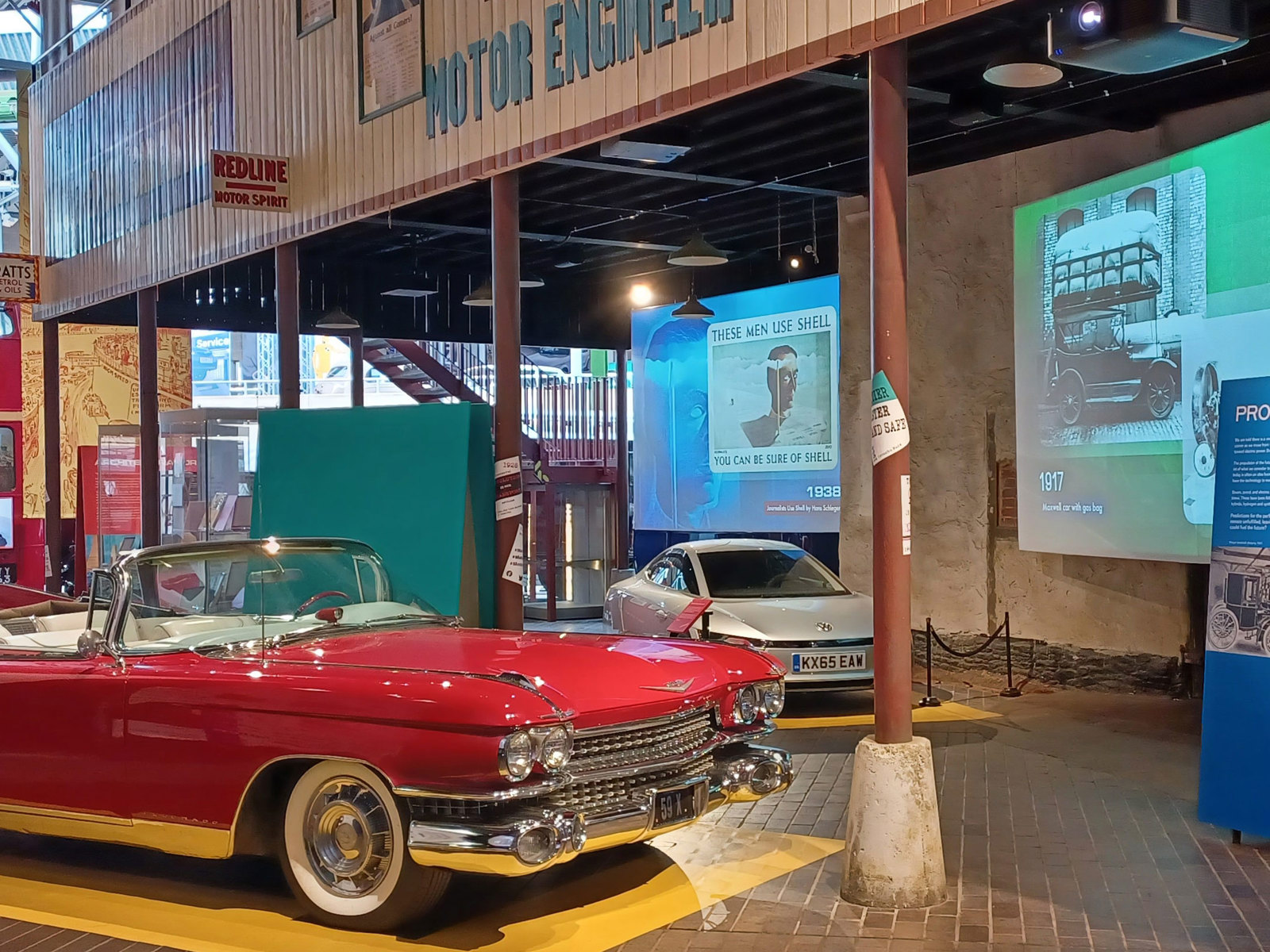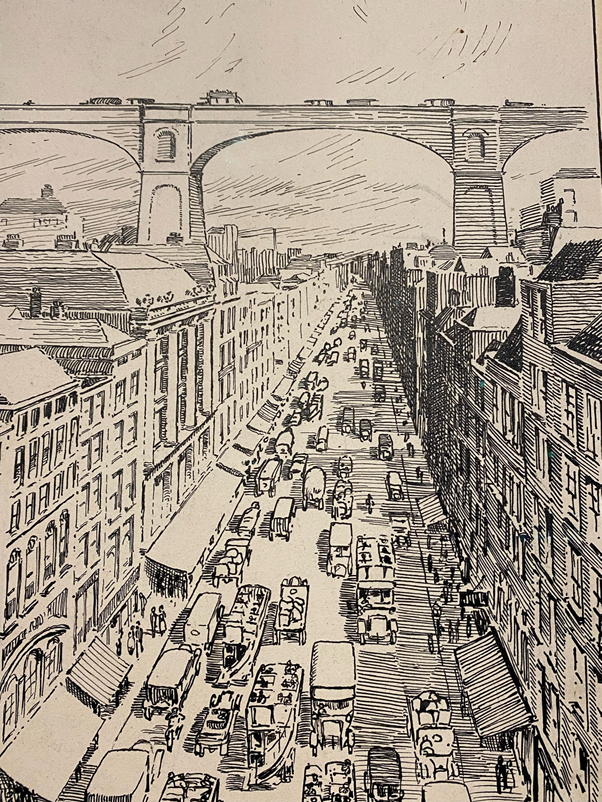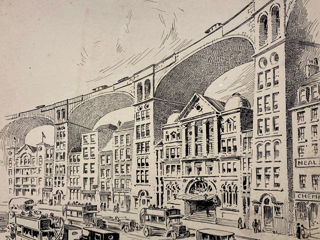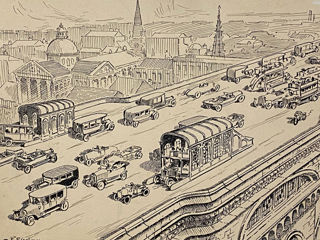
The Future of the Urban Landscape
04 December 2023
From ideas for futuristic cities to plans for new urban areas, designed and built with the car in mind, as National Motor Museum volunteer Seth Burgess discovered the Motopia? Past Future Visions looks at how our mobility has shaped our landscape and environment.
Today roads flow in, out, over, under, around, between and through urban and rural landscapes. They define where and how we live, how far we must travel to get to work or school. They influence the daily rhythms of our movements and the things we see along the way. It was with this in mind that designs for the cities of the future developed…
Motopia: A Study in The Urban Landscape written by Geoffrey Jellicoe discusses and explores the idea of a seamless architectural and technological collaboration between urban civilisation and nature. Motopia was a collaboration between engineers, architects, and landscapers to produce a city of the future that would be eco-efficient, eco-friendly and provide shops and residence to a large mass of people in a small area.

Originally planned to be on the outskirts of London, there was also discussion of this plan being used to renovate and modernise certain boroughs of London. This was largely due to an outcry for more urbanisation and new city designs after the bombing in the Second World War. The original plan was to be large enough for a residence of around 30,000 in an area of around 4 square kilometres for a budget of £14million. Much like many urban towns and cities of the time it was expected that residents would work elsewhere, typically big cities.
The foundations of the base layouts and size of the parks were taken from the parks and squares in London. These green areas would provide various places for leisure activities on both land and water as well as places of worship and learning.

With this design came ideas of roads and highways that would run through the skies and on buildings. This was with the hopes of separating the pedestrian from the dangers of being near a motorised vehicle. There would be walkways that moved as well as huge sections of nature parks throughout. This can be best seen in a Motopia model that derived from the book.
This model helped illustrate what Motopia could represent. Although Geoffrey did admit that there were some engineering liberties with the design that would not be feasible. Ideas such as roads on top of buildings would later be revised due to the vibrations and noise created by the traffic. Instead, it was suggested that the roads be tunnelled underneath the buildings to allow for gardens to be put on the rooftops.

Residences would not be too dissimilar to council house with some properties having private gardens. However, the intention with the buildings’ designs was to allow multiple different architects work on singular blocks to help create interesting variations across the city. An example of this kind of thinking can be seen in Borneo Sporenburg in Amsterdam.
What resulted was a seamless design for a futuristic city at the time and in some respects even now. Whilst Motopia was never actually built it is still worth noting that since Motopia’s conception many of these designs have inspired how cities have been landscaped and designed.
Personally, on canvas the prospect of a town or residence making full use of the four dimensions we live in to be an exciting prospect. I believe this route of thinking would resolve many problems we find on our roads and residences today such as congestion, constant road works and lack of housing. That said, whilst I think it looks good on canvas, there are issues I see that would arise because of this sort of urban development. Such as the soullessness from such vast concrete flats stacked on top of each other. I do not see how that is much different from council houses of today. For such a large cost as well. It removes any chance of architectural individuality and character in various homes and buildings. I believe that whilst peak efficiency is a valuable pursuit that should be prioritised, we should not lose out the heart and soul of individual buildings and areas with quirky designs that work around nature as opposed to making nature fit around us. I think of the uniqueness of the cottages and villages in the highlands and lake districts are perfect examples of finding a similar balance between man and nature. Houses of such distinctive beauty that people like Henry Ford could fall in love with.
That said, Motopia is a foundational idea that many people from all fields can contribute to and build upon that might remedy these issues I have. Although Motopia never came to be, is the world worse off for it? Or would it have been what we need for that next step into the future?
Seth Burgess

Seth is an university history student at Bournemouth. In 2023 he volunteered at Beaulieu, helping with various collections and getting an understanding of how a museum works. This is one of several blog posts to help introduce the Motopia? Past Future Visions exhibition.

Subscribe for updates
Get our latest news and events straight to your inbox.